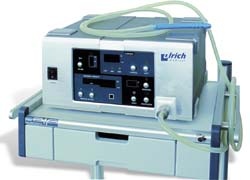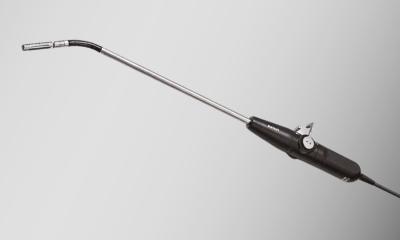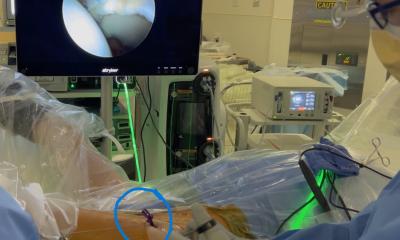Virtual coloscopy
A new generation of CO2 Insufflators
ulrich medical has announced the extension of its product portfolio by a CO2 Insufflator for virtual coloscopy by the end of this year.

These devices automatically insufflate carbon dioxide into the colon for virtual coloscopy examinations in CT. ‘Due to the regulated and constant insufflation the distension of the colon is significantly improved compared to common room air insufflation performed by handheld pump systems,’ ulrich explains. ‘Unwanted side-effects such as a too high and aching pressure are avoided. The patient’s comfort is increased as the setting and monitoring of gas volume and pressure are adequate to the patient’s requirements. In comparison to room air insufflation the insufflation of CO2 offers the additional advantage in terms of patient’s comfort of being re-absorbed faster.’
The CO2 Insufflator is operated with a patient application set. There’s also an optional caddy, with storage capacity for a CO2 bottle and a tray.
The new CO2 Insufflator will be on show at:
MEDICA (19-22 Nov. Dusseldorf)
Hall 12 #F04
RSNA (30 Nov-5 Dec. Chicago)
Hall D #620
29.10.2008





